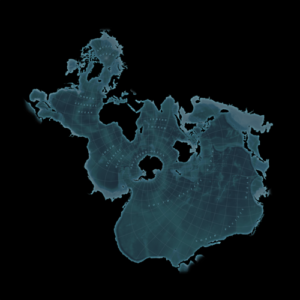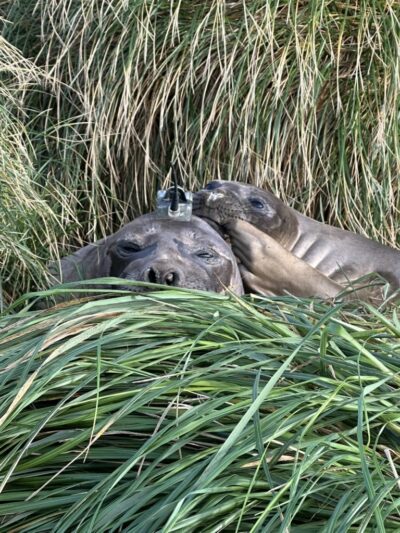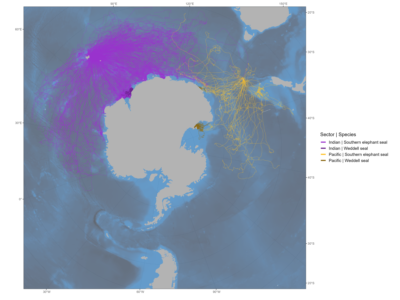New in Elementa: 20 years of seal-borne ocean sensor research in the Southern Ocean
In “An enduring, 20-year, multidisciplinary seal-borne ocean sensor research collaboration in the Southern Ocean”–published in UC Press’s transdisciplinary, open-access environmental science journal Elementa: Science of the Anthropocene–the authors recount the work of their French-Australian research and ocean observing collaboration.
UCP: Today we’re joined by members of the author team, including Clive McMahon, Christophe Guinet, Fabien Roquet, Rob Harcourt, and Mark Hindell. To all: thank you for the fascinating work you do, and for submitting your research to Elementa! Your team has spent over twenty years researching the Southern Ocean. What is happening in the Southern Ocean? And why is the Southern Ocean important to Earth more broadly?
The Southern Ocean is warming and this is of grave concern because it has negative consequences for global weather and climate. As the Southern Ocean warms, the processes whereby Antarctic Dense Water and Antarctic Bottom Water are formed are disrupted. These two processes are an essential component in the creation and formation of the southern arm of the global conveyor belt that moves heat, oxygen, carbon dioxide, and a multitude of nutrients around the world. Warming weakens this process, which reduces the strength of the current formation and the transport and exchange of heat, oxygen, etc., which in turn greatly disrupts the global climate and the earth’s ability to maintain homeostasis around the globe.
Seals carrying ocean profiling sensors have helped us understand in much greater detail than ever before where dense and bottom water are and how warm modified Circumpolar Deep Water–i.e., the warmer water returning via the conveyor belt to Antarctica–intrudes beneath the ice shelves onto the Antarctic Shelf, where it increases melting rates. Quantifying this melting and the input of fresh water is essential for understanding global sea level change and how fresh water input into the system affects dense and bottom water formation.
UCP: Your research is conducted using autonomous sampling platforms, and specifically, novel animal-borne sampling platforms. How has the use of autonomous platforms benefitted your research?

The world’s ocean is vast and there is an increasing acknowledgement that rather than four oceans the world has a single ocean, for example as visualized by the Spilhaus Projection. Collecting vital information like ocean temperature via ships is not straightforward, and as such there have been a suite of sampling platforms developed that can be deployed into the ocean to collect and transmit real-time temperature-salinity profiles via satellites. The most well-known of these is the Argo float fleet. Argo floats are free drifting instruments that are deployed from ships and are carried around the globe on currents. These are typical examples of what we refer to as autonomous sampling platforms.
The further development of miniaturised instruments has allowed us to use animals to collect information from areas that are inaccessible to Argo and similar autonomous platforms–for example in the pack-ice and on the continental shelf. This has provided a wealth of data that has helped us better understand the physical structure of the Southern Ocean, how it is changing over time, and importantly, how these changes affect animal behaviour and performance. They have helped us to identify areas of high ecological importance. Indeed, elephant seal at-sea behaviour was instrumental to informing the size and boundaries of the French Southern and Antarctic Lands (TAAF) marine protected area (MPA) that is one of the largest marine protected areas in the world. This MPA covers over 1.6 million square kilometres across the southern Indian Ocean and protects important habitats and feeding areas for seals, cetaceans, albatross, penguins, petrels and many different fish species, in addition to all the zoo- and phytoplankton communities.

UCP: You utilize the natural behavior of elephant seals and Weddell Seals to collect oceanographic data. How does this work in practice? What types of data do the seals provide?
We attach Conductivity-Temperature-Depth sensors (CTDs) to seals that transmit information each time the seals surface through the Argos satellite constellation. This means the information is available in near real time to the global operational (weather and ocean forecasting) community. The link via the Argos satellites also allows us to track the seals and identify where each profile has been collected. The instruments collect conductivity and temperature observations as the seals dive (predominantly from the top 1,000m of the water column). These data allow us to study the structure of the water column, and over long periods, quantify changes in the ocean’s fundamental properties.

UCP: What are some of your takeaways from this research–what has this seal-collected data shown us? Are there implications for future animal-borne sensor research? And what comes next for your research team?
Earth’s climate is changing and there is an urgent need to understand what the drivers and mechanisms of this change are. To do this we need to ensure that there is a comprehensive observing system, drawn from many sources, that provides information on the physics and biology of the world’s ocean. Some key findings so far are an important new source of Antarctic Bottom water, and evidence for a warming of waters on the Antarctic shelf, both of which have implications for global ocean circulation and climate processes. We have also shown that seals can provide valuable insights into the shape of the ocean floor (bathymetry) which fundamentally influences the rate of glacial melt and sea level rise. In terms of biology, the seal work has shown how mesopelagic (midwater) prey species are influenced by ocean structure and how this might change in the future. More broadly, the seal tracking data has also contributed to large-scale multi-species tracking synthesis which has identified Areas of Ecological Significance in the Southern Ocean and indicated how Marine Protected Areas might be designed in the future to best protect the Southern Ocean.
Our project demonstrates the importance of monitoring the state and health of our ocean and how it is changing. Having a diverse, resilient, and robust system of observations, with a complimentary suite of observing platforms–one of which has been the animal-borne ocean observations–has provided key observations from the Antarctic, and enhances our capacity for developing reliable forecasts. And conversely, any reductions in observational coverage would negatively impact forecasting ability and capacity.
AniBOS has managed to maintain a continuous time series of observations for more than two decades and this is allowing us to observe key changes in the state of the oceans. One region that is changing dramatically is the world’s tropics, and AniBOS is now part of a proposed integrated pan-tropical observing system that includes animal-borne observing systems. Here we plan to equip marine turtles with the miniaturised CTDs that we have used so successfully on seals to collect sub-surface physical observations that will improve our ability to forecast tropical storms and tropical cyclones. This is important given the destruction that these storms can have on coastal infrastructure and communities, where the vast majority of people live. This is an important advance and helps grow our AniBOS network to provide the essential ocean observations we all need to provide better forecasts–forecasts that save lives and livelihoods.
UCP: Thank you again, and best wishes for your future research endeavors!
Open Science for Public Good
Elementa: Science of the Anthropocene is a transdisciplinary, open-access journal committed to the facilitation of collaborative, peer-reviewed research. With the ultimate objective of accelerating scientific solutions to the challenges presented by this era of human impact, it is uniquely structured into distinct knowledge domains, and gives authors the opportunity to publish in one or multiple domains, helping them to present their research and commentary to interested readers from disciplines related to their own.
Impact Factor: 4.5



